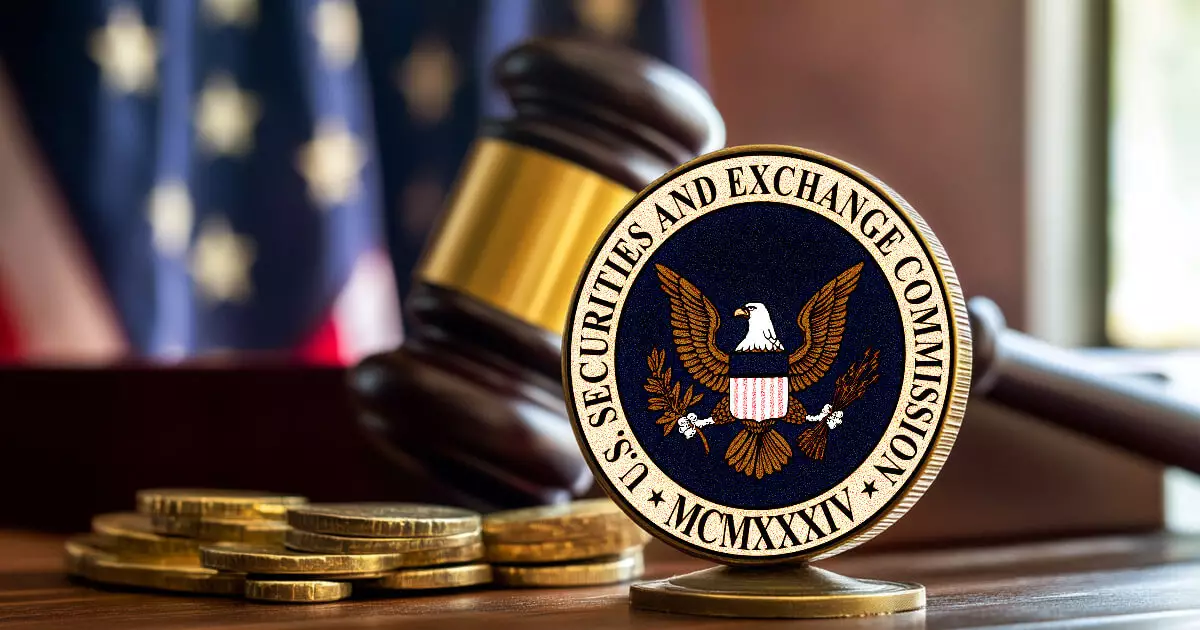The clash between regulatory bodies and crypto firms is becoming more pronounced as the Securities and Exchange Commission (SEC) takes decisive action against market participants. The recent charges against Cumberland DRW, a Chicago-based cryptocurrency market maker, raise significant questions about compliance, the nature of cryptocurrency itself, and the overarching regulatory framework that governs it.
On October 10, the SEC leveled accusations against Cumberland for purportedly operating as an unregistered securities dealer. According to the agency’s complaint, Cumberland has conducted over $2 billion in cryptocurrency trading classified as securities since March 2018. The SEC argues that these transactions were executed in violation of federal securities laws designed to protect investors—a clear indication of the agency’s willingness to enforce compliance within the evolving crypto landscape.
The SEC’s complaint emphasizes that all dealers dealing with securities, including those in the crypto realm, must register appropriately. As Jesse G. Tenreiro, the acting chief of the SEC’s Crypto Assets and Cyber Unit, noted, the law applies uniformly, irrespective of the financial assets involved. This points to a pivotal argument within the crypto community regarding the classification of tokens, many of which are argued to be commodities rather than securities.
In striking contrast to the SEC’s stance, Cumberland has framed its defense around the narrative of innovation versus regulation. The company claims that the charges are an assault on technological progress and market participation in the crypto space. On social media, Cumberland expressed its commitment to maintaining robust compliance while simultaneously asserting that it would not alter its operational framework in light of the SEC’s actions. The firm articulated confidence in its compliance procedures, emphasizing that it has engaged in discussions with regulatory bodies over the past five years.
However, Cumberland’s assertion raises important questions about the integrity of its operations. If the company previously obtained a broker-dealer registration through SEC Chairman Gary Gensler’s guidance, why did the firm engage in trading activities that the SEC now classifies as unlawful? The claims made by Cumberland that the license was exclusively valid for Bitcoin and Ethereum trading also cast doubt on the company’s understanding of regulatory compliance and its operational boundaries.
The ongoing conflict between the SEC and Cumberland DRW does not exist in isolation; it mirrors a larger narrative in the cryptocurrency market about regulation and enforcement. The SEC’s aggressive regulatory stance towards cryptocurrency retailers indicates a clear intention to establish order amidst the chaotic and often speculative nature of digital assets. Yet this approach raises concerns regarding the potential stifling of innovation within a burgeoning industry.
Moreover, Cumberland’s claim that the SEC’s registration requirements are a “mirage” offers a critical perspective on the cryptocurrency landscape. If established entities struggle to navigate the regulatory framework, what hope do smaller startups have? As such, the tension between the need for investor protection and the encouragement of innovative technological developments should prompt legislators and regulators to reconsider the current approach to crypto regulation.
Adding another layer of complexity to the situation, it is worth noting the historical context surrounding Cumberland DRW. In 2013, the Commodity Futures Trading Commission (CFTC) filed market manipulation charges against DRW—a case that concluded with a ruling favoring DRW. This history complicates the present SEC actions and signals that regulatory bodies are closely scrutinizing a sector that has been unable to shake off its turbulent past.
The juxtaposition of these events creates an atmosphere of skepticism about regulatory motives and their effectiveness. The recent SEC complaint highlights the need for continuing dialogues between crypto firms and regulatory bodies to clarify rules and expectations, as well as to foster an environment aimed at safeguarding investors without endangering innovation.
As the SEC and Cumberland DRW engage in a legal and ideological showdown, the outcome will be pivotal in shaping the regulatory landscape of the cryptocurrency market. The complexities surrounding market classification, compliance, and the need for clear regulations will continue to be a focal point for industry participants. How this situation unfolds will help define not just the future of Cumberland, but also the trajectory of crypto market regulation as a whole. The stakes are high, and the implications far-reaching, making it essential for all parties involved to foster communication, transparency, and a shared vision for the future of digital assets.


Leave a Reply